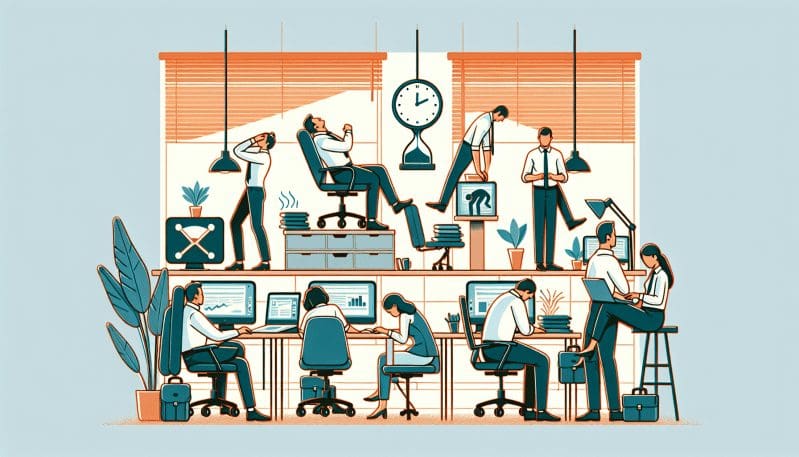The Hidden Health Cost of Modern Workspaces: Is the Ergonomic Revolution Too Late?
- Home
- The Hidden Health Cost of Modern Workspaces: Is the Ergonomic Revolution Too Late?

- Editors Desk
- April 9, 2024
- 0 Comments
As the dawn of sleek, minimalist office spaces rises, with their clean lines and high-tech accommodations, workers worldwide find themselves nestled within what can only be described as the epitome of modern workspace design. But beneath the polished surface of these innovative work environments lies the often overlooked narrative of health and well-being—or the lack thereof. It’s time to critically assess whether the ergonomic revolution in office design has truly taken hold, or if we’re simply paying lip service to the concept while employees bear the hidden costs.
The modern workspace has undergone a transformation, thanks in part to Silicon Valley’s penchant for disrupting not just technology but the very spaces in which that technology is created. Open floor plans, standing desks, and communal work areas are now the norm, with aesthetics playing a significant role in the design. However, these changes, often driven by the desire for collaboration and flexibility, have unintentional consequences.
Personal stories of chronic pain and repetitive strain injuries are becoming increasingly common among the workforce. John, a graphic designer at a prominent tech company, spends upwards of nine hours a day seated at his modern yet rigid workstation. The result? Chronic lower back pain that has become a constant companion in his daily life. Similar tales echo around the modern corporate landscape, painting a grim picture of our work environments.
Experts are also raising the alarm. Dr. Amelia Richardson, an ergonomics consultant with over two decades of experience, emphasizes the physiological repercussions of poorly designed workspaces. ‘The human body is not built for static postures, nor is it suited to repetitive, unvarying movements,’ she explains. ‘Modern office designs often fail to account for these basic ergonomic principles, leading to a rise in musculoskeletal disorders among workers.’
Investigative reporting reveals that while many companies boast ergonomic offices, their actions—or inactions—suggest otherwise. Budget constraints, aesthetic priorities, and a lack of awareness result in workspaces that are ergonomically inadequate. Sit-stand desks become static due to improper training or lack of encouragement to adjust positions throughout the day. Ergonomic chairs remain unadjusted, negating their purpose.
Moreover, the clash between the drive for aesthetically appealing offices and ergonomic necessities is stark. Glass walls and hardwood floors may convey a certain sophistication, but they offer little in terms of acoustic privacy and comfort. The irony is not lost on those who find themselves working longer hours in these ‘state-of-the-art’ environments, only to leave with aches that weren’t on the morning agenda.
As we delve into the heart of this narrative, questions arise. Are businesses truly adopting ergonomic practices, or are they merely adopting the appearance of them? How can design and health coexist without compromise? This in-depth analysis calls for a more health-centric approach to office design, urging businesses to prioritize employee well-being alongside aesthetic and functional considerations.
In closing, the drive for modernity in workspaces must include a genuine commitment to the health and longevity of the workforce. It is not enough to simply look the part; our offices must be sanctuaries of productivity, creativity, and wellness, rather than silent contributors to an occupational health crisis. The ergonomic revolution is not a trend—it’s a necessity that we might already be too late in fully realizing. Perhaps it’s time for a new kind of disruption: one that puts the well-being of workers at the forefront of workspace innovation.

Leave A Comment